The World’s 20 Greatest Currency Failures
Disclosure: We are reader-supported. If you purchase from a link on our site, we may earn a commission. Learn more
Last Updated on: 10th January 2025, 01:28 am
Two of the most important lessons taught by economic history are that 1) Money is a useful store of value that makes trade much easier and economic accelerates economic growth, and 2) when people lose faith in the stability and purchasing power of their money due to sketchy government practices such as money printing and currency debasement, entire economies can be destroyed in a VERY short period of time.
Here are twenty examples of the world’s greatest currency failures, and what lessons they might have for prudent investors today:
1.Chinese Yuan
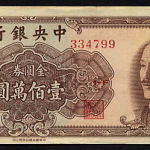
Different forms of the yuan have been issued in nearly two dozen different Chinese provinces over the course of the past 125 years. The Yuan has similar roots to the Mexican Peso — both are the sons of the Spanish Dollar that was so widely circulated in the 17th and 18th centuries. Several of these offerings were mishandled, though the most notable came from a nationalize central bank.
In the aftermath of WWII, China was reeling from Japanese occupation and still resolving its own civil war. The Central Bank of China began printing yuans at an alarming rate, peaking at an adjusted annual inflation figure of more than 5,000% in 1949. In fact, research from the Cato institute estimates that it took an average of 5.34 days for prices to double in yuans between October 1947 and May 1949.
China actually resolved the hyperinflation with a shockingly unoriginal but effective solution: it created “custom gold units”, which were a new yuan backed by gold. The Nationalist (later Republic government of Taiwan) continued to use a stable silver yuan until 2000.
2.Roman Denarius
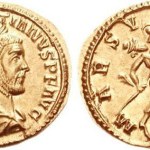
The Roman emperor Diocletian’s treatment of the denarius coins was maybe the west’s first great example of politically manipulated currency gone horribly wrong. Diocletian was fighting the division of the empire and had at one point increased the size of the Roman Legion four-fold in a vain attempt at stability. In the process, he also created massive shortages by instituting price controls and forcing citizens into black markets. To top it all off, he began diluting the silver content of the currency.
By the mid-third century, neither the government nor the citizenry valued the coins at all, making them worthless. What were the citizens actually doing? Hoarding real gold and silver, stockpiling them in secret so that the greedy tyrant couldn’t ruin their purchasing power through official denarius money.
3.Greek Drachmai
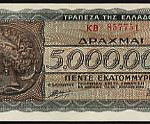
It’s not an exaggeration to say that WWI and WWII were caused by (in part), and lead to more, episodes of monetary mismanagement than the rest of human history put together. Greece suffered at the hands of German and Italian occupiers, and between 1941 and 1944, who churned out money at reckless rates to finance conflicts across Europe. The Greeks were forced to support 400,000 Axis soldiers at the same time that productivity and income was declining by 70% for Greek workers. Printing was their only option.
In 1954, one new Drachma was trading for 50,000,000,000,000 of the 1944 drachmai.
4.Zimbabwe Dollar
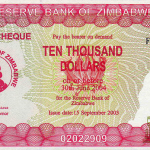
Zimbabwe, along with Weimar Germany, is one of the most commonly known contemporary examples of hyperinflation and currency collapse. Mired in racial conflict and an economically clueless government, Zimbabwe began churning out new bank notes at unprecedented levels in the late 1990s and early 2000s. Inflation was first an international story in 2006, when it reached more than 1,000% — but this was only the beginning.
Zimbabwe tried to compensate for rising prices by issuing larger and larger bills. In May 2008, the first notes with a value greater than 1 billion ZWD was introduced by the Reserve Bank of Zimbabwe. By August of that same year, with inflation nearing (prepare yourself) 500,000,000,000,000,000,000% — or 500 quintillion percent — before the country passed a law removing ten zeros from all notes and all prices.
5.Belorussian Ruble

Belarus did not handle separation from the Soviet Union particularly well; between 1993 and 2003, the Belorussian Ruble was so aggressively printed and so much of the country’s productivity was crushed by nationalization and price controls that all currency essentially added three zeros. Unlike Zimbabwe, however, Belarus introduced a new currency before reaching quintrillions of percent in inflation.
6.Yugoslavian Dinar

Between 1992 and 1995, Yugoslavia ruined, introduced, and re-ruined several different variations of the ‘dinar.’ Some governments really do think that money is just a number assigned to prices and that purchasing power isn’t a reflection of productivity and stability, and Yugoslavia was a poster child for this fundamental misunderstanding.
During peak hyperinflation, the rate of price increases was more than 100% a day and had jumped by more than a quadrillion percent in just two years. Facing economic collapse, the government decided to adopt the German Mark in January 1995.
7.Angolan Kwanza
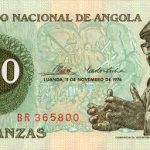
Civil war and uncontrolled money printing consumed Angola for several decades between the 1970s and past the turn of the century. With economic productivity plummeting and desperate governments piling on debt, a new ‘readjusted’ Kwanza was created in 1995. By 1999, a New Kwanza was introduced to replace the failed, readjusted one. Many pockets of Angolans stopped used fiat currencies altogether and instead bartered or used precious metals as a means of exchange — a sensible decision given that one New Kwanza was equal to more than 1,000,000,000 original notes.
8.Peruvian Sol and Inti
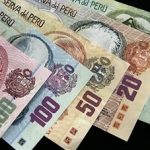
Peru was an interesting case: it managed to destroy a currency or two without financing a war somewhere or staving off civil unrest. Rather, the Peruvian government began public works projects and massive deficit spending while ignoring their debt payments in the late 1980s and early 1990s.
Foreign investors were terrified of the money printing and possibility of default, so foreign direct investment dried up almost completely for the tiny economy. In 1986, with hyperinflation just beginning, Peru replaced the Sol currency with the Inti. The policies didn’t change, however, so by 1990 inflation was nearing 400% and Peru was forced to introduce the Nueva Sol in 1991 at a rate equal to one Nueva Sol to 1,000,000,000 original Sol.
9.Argentine Peso
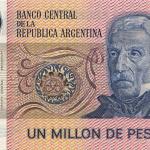
Argentina has been a financial mess for most of the 20th and 21st century (so far), and had its most extreme currency crisis between 1975 and 1992. Civil and political unrest came to a head in 1975, leading to a significant recession. Argentina had been a serial defaulter, so very few lenders were even willing to entertain any credit granting. Those that did were asking for huge interest rates. The Argentine government refused to borrow at such rates, so it turned to the printing press. By 1992, a Peso was worth 1/100 billionth of what it was worth just a decade earlier.
10.Chilean Escudo
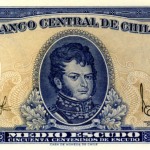
In 1971, Salvador Allende, the newly elected socialist president of Chile, nationalized major Chilean companies and embarked on a truly remarkable destruction of the private economy and all productive capacity in the South American nation. To offset the enormous loss in productivity, the Chilean Central Bank started to print fiat money. Inflation reached 600% by as soon as 1973 and 1,200% by the start of 1974. The economic turmoil helped lead to a military coup, and a new old escudo was replaced by a New Peso at a rate of 1,000 to 1.
11.Austro-Hungarian Pengo
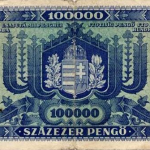
WWII claimed another victim with the Austrian and Hungarian Pengo, which itself was a replacement of the heavily-printed korona in 1926. The hyperinflation in Hungary was vicious; in 1944 the largest note was worth 1,000 pengo, but before the end of 1946 the bank was issuing 100,000,000,000,000,000,000 pengo notes. By the time that the pengo was replaced by the new “Forint”, one forint was trading for 400 octillion (29 zeros) pengo.
When hyperinflation takes, and people stop trusting their currency, this is what can happen.
12.German Papiermark
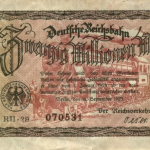
Perhaps the most well known and most impactful hyperinflation in human history, the foundation for economic collapse in Germany was laid in the Treaty of Versailles by Woodrow Wilson. When victorious and vengeful French and Belgian took possession of the most productive German regions, a desperate German government began printing money that was not backed by anything to pay it’s bills and workers. By 1923, it would take 4.2 trillion German papiermarks to exchange for 1 US dollar.
Yearly inflation was in the hundreds of thousands of percent, and the prices of goods and services roughly doubled every two days. A major, western industrial power had been completely destroyed through its monetary policy, helping the gold-backed US dollar gain worldwide trust as an alternative.
13. French Assignat (1789–1796)
The French Assignat was introduced during the French Revolution as a form of paper currency backed by confiscated church lands. Initially intended to stabilize the economy, the government quickly began overprinting assignats to fund its escalating expenses, especially military campaigns and revolutionary programs. This led to rampant inflation, a collapse in public trust, and a return to barter systems in many regions of France. The collapse of the assignat helped pave the way for Napoleon's more stable monetary reforms.
14. Venezuelan Bolívar (1990s–Present)
The Venezuelan Bolívar is one of the most recent examples of hyperinflation and currency collapse. Decades of political mismanagement, rampant corruption, and over-reliance on oil exports left Venezuela vulnerable to economic shocks. Beginning in the 1990s and worsening in the 2010s, inflation spiraled out of control, exceeding 1,000,000% in 2018. The government issued successive redenominations, including the “Sovereign Bolívar,” but confidence in the currency remains nearly nonexistent. Many Venezuelans have turned to the U.S. dollar or cryptocurrencies for daily transactions.
15. Confederate Dollar (1861–1865)
The Confederate States of America Dollar was the currency issued during the American Civil War by the secessionist southern states. With no gold or silver backing and an economy heavily reliant on a blockade-ridden agricultural sector, the Confederate government resorted to printing vast amounts of unbacked paper money. By 1864, inflation reached an estimated 9,000%, rendering the Confederate dollar nearly worthless and exacerbating the South's economic collapse.
16. Weimar Germany's Reichsmark (Post-1923 Papiermark Replacement)
While the Papiermark hyperinflation is well-documented in your article, the Reichsmark, which replaced it, offers an additional lesson. The Reichsmark was introduced in 1924 through the Dawes Plan, which linked the currency to the U.S. dollar and gold-backed loans. This transition shows how external support and strict monetary policy reforms can restore confidence after a severe collapse.
17. Russian Ruble (1991–1998)
The Russian Ruble faced massive devaluation following the collapse of the Soviet Union. Transitioning from a planned economy to a market economy, Russia experienced widespread corruption, capital flight, and economic chaos. By 1998, the ruble collapsed entirely during the Russian financial crisis, with inflation rates peaking above 80% annually. Russia’s struggle to stabilize its currency underlines the challenges of economic liberalization without adequate institutional reforms.
18. Brazilian Cruzeiro (1940s–1994)
Brazil's Cruzeiro underwent several redenominations and replacements due to chronic inflation throughout the mid-to-late 20th century. Political instability, debt crises, and erratic economic policies led to hyperinflation rates exceeding 2,000% annually by the late 1980s. Brazil’s eventual success in stabilizing its economy with the introduction of the Real in 1994 demonstrates how comprehensive reform, including fiscal responsibility and price stabilization measures, can restore economic credibility.
19. Japanese Yen (Post-WWII)
The Japanese Yen faced significant devaluation and inflation immediately following World War II. With Japan’s economy devastated by the war and its industrial capacity severely diminished, the yen’s purchasing power collapsed. U.S. intervention through the Dodge Plan (1949), which pegged the yen to the U.S. dollar and focused on export-led growth, eventually stabilized the currency and laid the groundwork for Japan’s economic miracle.
20. Indian Rupee (1947–1966)
Following India’s independence in 1947, the Indian Rupee faced challenges due to partition, resource shortages, and growing fiscal deficits. The rupee experienced steady devaluation over the next two decades, particularly during the 1966 economic crisis when India was forced to devalue its currency by 57% as part of a structural adjustment program supported by the IMF. This episode highlights the difficulties faced by newly independent states in maintaining currency stability amid political and economic upheaval.
Currency Collapses in History
These failed currencies all certainly have unique histories, however some underlying causes can be gleaned from some of history’s most infamous monetary disasters.
Massive government spending — used to finance conflict, public projects, or servicing debts — is a clear precursor to every currency failure. Most currency collapses are also exacerbated by a loss in economic productivity, whether through war, unrest, nationalization or socialization of industry. The combination of lessened productivity and huge supplies of unbacked, unstable money causes individuals to lose faith in their medium of exchange.
Modern history reveals an incredibly unstable world monetary base; the median age of all world currencies currently in circulation is 39 years. Even Americans can lose faith in their money when they see its value decline too rapidly. This shocking survey reveals just how little trust people have in dollars anymore.
History tells us that with nothing backing a currency, and with no limits on politicians and central banks to control and print paper money, hyperinflation is a very real and very terrifying possibility.



 Silver
Silver Gold
Gold Platinum
Platinum Palladium
Palladium Bitcoin
Bitcoin Ethereum
Ethereum

 Gold: $3,680.88
Gold: $3,680.88
 Silver: $42.69
Silver: $42.69
 Platinum: $1,414.70
Platinum: $1,414.70
 Palladium: $1,215.39
Palladium: $1,215.39
 Bitcoin: $114,898.57
Bitcoin: $114,898.57
 Ethereum: $4,499.91
Ethereum: $4,499.91